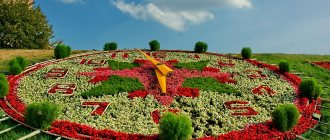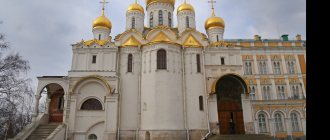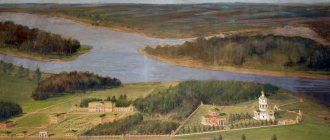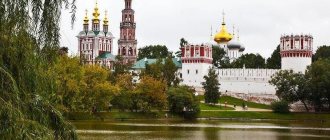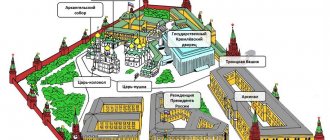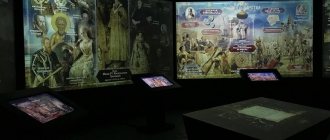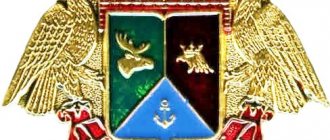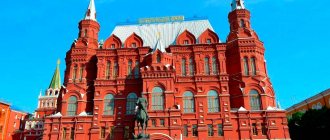| Arbat District | |
| Arbat municipal district | |
| Status | district/municipal district |
| Included in | Moscow cities |
| Administrative District | Central Administrative District |
| Area | |
| Name | Arbat |
| Date of formation | July 5, 1995 |
| Lineup changes | In 2002, part of the territory of TEOS China-Gorod was annexed |
| Head of the council | Maxim Aleksandrovich Deryugin[1] |
| OKATO code | 45 286 552 |
| Municipal district | |
| Name | Arbat |
| Date of formation | October 15, 2003 |
| Head of the municipality | Lidia Anatolyevna Kuragina[2] |
| OKTMO code | 45 374 000 |
| Characteristic | |
| Square | 2.11[3]km² (125th place) |
| Population (2018) | ↗35,529[4] people (0.28%, 117th place) |
| Population density (2018) | 16,838.39 people/km² (47th place) |
| Residential area (2008) | 754[3] thousand (112th place) |
| Metro stations | 01 Lenin Library 03 Arbatskaya 03 Smolenskaya 04 Smolenskaya 04 Arbatskaya 04 Alexander Garden 09 Borovitskaya |
| Official website of the district | |
| Official website of the municipality | |
| Arbat on Wikimedia Commons | |
Arbat
is a historical and administrative district in Moscow, as well as an intracity municipal formation. It is located on the territory of the Central Administrative District to the west of the Kremlin.
The area of the district is 211 [3]. Population: 26.9 thousand people (as of January 1, 2010).
Important ministries are located on the territory: the Russian Ministry of Defense, the Russian Foreign Ministry, the Ministry of Economic Development (Trubnikovsky lane, 19)[5].
The main streets are Arbat (pedestrian) and New Arbat, Garden Ring, Vozdvizhenka.
Territory and boundaries of the district
The district is located in the central part of Moscow as part of the Central Administrative District.
The border of the Arbat district runs: along the axis of Smolenskaya Street, then along the axis of Novoarbatsky Bridge, the axis of the Moscow River bed, the axes of Konyushkovskaya Street, Bolshoy Devyatinsky Lane, Novinsky Boulevard, Povarskaya Street, Skatertny Lane, Khlebny Lane, then along the southern borders of the property No. 8 on Merzlyakovsky Lane and property No. 7b on Nikitsky Boulevard, along the northern borders of property No. 6 on Nikitsky Boulevard and property No. 1 on Kalashnoy Lane, the axes of Kalashnoy, Kislovsky, Bolshoy Kislovsky Lane, Bolshaya Nikitskaya Street, Mokhovaya, Znamenka, Bolshoi Znamensky Lane , Kolymazhnaya Street, crossing Gogolevsky Boulevard, along the axes of the western passage of Gogolevsky Boulevard, Sivtsev Vrazhek Lane, Denezhny Lane, Glazovsky Lane, the southern and western borders of Smolenskaya-Sennaya Square to Smolenskaya Street[6].
The area of the district is 276.15 [7].
Povarskaya Sloboda
The space between the current Povarskaya and Bolshaya Nikitskaya streets in the 17th century. was occupied by the “stern” Povarskaya Sloboda. Its inhabitants gave the names to Povarskaya Street, Khlebny, Skatertny, Nozhovoy and Stolovoy lanes. According to 1573, the organization of food services for the royal palace was carried out by 477 people who made up the staff of the Nourishing Palace. Among them, the source names sytniks, cooks, pomyasovs, bread makers, tablecloth makers, connectors and representatives of other specialties.
Old Russian cuisine was distinguished by its simplicity and monotony: the number of dishes was huge, but, for the most part, they differed only slightly from one another. Rich people compiled a list of dishes for the whole year: the count was based on church holidays, fasting and “meat-eaters”. With the general custom of observing fasts, the Russian table was divided into fast and fast. In both, pies played a prominent role, which, according to the method of baking, were divided into hearth and spun. The first ones were always made from leavened dough, the second ones were sometimes made from leavened dough, sometimes from unleavened dough. In the old days, Russians loved to add spicy seasonings to all kinds of dishes, especially onions, garlic and saffron. In the XVI-XVII centuries. onions and garlic were, as it were, essential items: for example, they were included in the number of feeds that residents were obliged to give to scribes sent to compile scribe books. When preparing food, they also usually did not use salt: during the meal itself, everyone put in as much salt as they wanted. Since the 18th century Western European cuisine is penetrating into Russia, and food is becoming more familiar to us.
The origin of the small, only 95 m long, Bear Lane is curious. P.V. Sytin believed that there was some particularly remote and remote place here, but A.A. was more right. Martynov, who believed that its name comes from the “bear handlers” who lived here and were at the royal court. Povarskaya Sloboda was rich: in the 17th century. There were two churches here - the Rzhev Icon of the Mother of God and Saints Boris and Gleb.
Coat of arms and flag
Coat of arms of the Arbat district
The coat of arms and flag of the district were approved and entered into the Heraldic Register of the city of Moscow with the assignment of a registration number on October 5, 2004.
The coat of arms of the district is a golden shield of the Moscow form, which depicts a blue Ionic capital with an open handwritten book on it in a red binding with silver pages - the left one is filled and the right one is blank. Below the capital is an upward-facing blue brush with a red handle and a downward-facing superimposed silver quill pen with a blue edge. The golden shield symbolizes the sandy soils on which the area is located. The Ionic capital is a symbol of the spiritual richness of the area - culture, architecture and history. The open handwritten book also symbolizes the rich history of Arbat and speaks of a number of high-rise buildings in New Arbat, as well as the Moscow House of Books. The pages of the handwritten book symbolize the movement of the history of the area. The brush and pen symbolize many creative personalities - writers, poets, artists and other people of art who have lived on Arbat for many years[16].
Arbat
Video: Arbat
Origin of the name and history of the street
There is no single version of the origin of the street name. According to some historians, this word has Arabic roots and means “suburb.” The fact is that once the Arbat actually adjoined the White City and was its suburb.
Old Arbat in 1980
Another assumption is that this word comes from the Turkic “arba”. The version is based on the fact that artisans, including those involved in making carts, once lived in this area.
In the 16th century, the authorities attempted to rename the street Smolenskaya: the road to Smolensk passed through it. However, this idea was soon discarded because the new name did not catch on.
The special location of the Arbat contributed to the fact that mainly artisans, jewelers and traders settled there. Later, rifle regiments were located here. Now the names of the adjacent streets remind us of those times.
At the end of the 17th century, after the liquidation of the Streltsy courts, this area became the center of attention of the Moscow aristocracy. One after another, noble houses began to appear here, striking with the splendor of their exterior decoration and the richness of their interiors. During the fire of 1812, most of them were destroyed, but later new ones were built on the old foundations.
Unfortunately, during Soviet times the street lost its former luster. Not many churches and noble mansions have survived to this day. Despite this, the spirit of old Moscow still hovers here. This was partly possible due to the fact that Arbat was turned into a pedestrian zone - there are no noisy roads, smoky enterprises and modern office buildings that spoil the appearance.
Old Arbat street
Sights of Old Arbat
The lives of many of Russia's greatest cultural figures are connected with Arbat. Over the years, such geniuses as A. S. Pushkin, M. Yu. Lermontov, A. Bely, artist S. V. Ivanov, composer A. S. Scriabin and many others lived and worked here.
Memorial apartment A.S. Pushkin on Arbat
On Arbat there is a memorial apartment for Alexander Sergeevich Pushkin. He lived in it for a little less than six months, and it was here that he came with his young wife Natalya (nee Goncharova) after their wedding in the Church of the Ascension of the Lord. The museum created here contains the poet’s personal belongings, engravings and paintings that reflect Pushkin’s complex relationship with Moscow. On the second floor, tourists can see the rooms in which Alexander Sergeevich lived with his wife; memorial items of his family are also stored here. The museum is open to the public from Wednesday to Sunday.
The house where the memorial apartment of A. S. Pushkin is located
Exhibits in the poet's memorial apartment
House-Museum of Mikhail Yurievich Lermontov
While walking along Old Arbat, it is worth turning onto the small street Malaya Molchanovka - this is where Mikhail Lermontov spent his childhood before moving to St. Petersburg. Thanks to the care of historians and art critics, it was possible to restore the atmosphere of the 19th century here - upon crossing the threshold, visitors can plunge into the times of gallant gentlemen and beautiful ladies. The museum’s rich exhibition tells the story of the poet’s childhood and youth, his period of study at the boarding school and university, as well as the development of his work. In the rooms, the interiors of that time were restored with great care; on the walls there are paintings relating to the life and work of the genius, drawings created by his hand, including one of the most valuable exhibits - a self-portrait.
House-Museum of M. Yu. Lermontov
Monument to Bulat Okudzhava
Between houses No. 45 and 47 at the intersection of Arbat and Plotnikov Lane there is a sculptural composition dedicated to Bulat Okudzhava, which is a stylized courtyard where he spent his childhood. On a platform paved with paving stones there is an arch from which the poet “comes out.” The statue perfectly conveys the dynamics: Okudzhava seemed frozen in motion, with his hands in his pockets and slightly stooped as he walked. A little further away there is a bronze table and two benches, and on the two arches framing the composition are engraved quotes from the bard’s work. It is worth noting that Bulat Okudzhava treated this street with special tenderness. Many of his works are dedicated to her, and in particular to a small Moscow courtyard, including “Ah Arbat, my Arbat...”, “Ancient embroidery of the Arbat romance...” and others.
Monument to Bulat Okudzhava
The house where Suvorov was born
Near house number 14 on Arbat you can see the remains of the foundation of the house where the greatest Russian commander Alexander Vasilyevich Suvorov was born. The building itself, as well as the bell tower adjacent to it, were destroyed during the war by an artillery shell. You can learn more about this place, as well as about the life and work of Suvorov, by booking a tour, since there is neither a memorial sign nor any information about the previous owners near the house.
Monument to Gogol
The great Ukrainian and Russian writer N.V. Gogol is immortalized in bronze on Gogol Boulevard on Arbat. The monument depicts Nikolai Vasilyevich in full bloom: he stands at full height, holding a small notebook in his hands. It is noteworthy that in this place there was previously another monument to the writer, opposite in style and character. He sits on it, hunched over and as if he has lost all vitality. However, by government decree, this sculpture was moved to the house where Gogol spent the last years of his life.
Tsoi's Wall
One of the cult places for fans of the Kino group is the so-called Tsoi Wall. It was here, after the death of the singer, that the inscription “Tsoi is alive” first appeared, which distinguishes his true fans. The wall of an ordinary courtyard turned into a kind of memorial plaque, and later became a symbol of freedom and a place for self-expression by youth of the late 20th century. Even now, new inscriptions appear on it from time to time: quotes from songs, confessions and messages for friends.
Monument to N.V. Gogol
Wall of Viktor Tsoi
Video: Street musicians on Arbat
Walking along Arbat: romance of the streets
Old Arbat, as before, attracts bohemians. In the warm season, the street turns into a real art gallery: here you can admire the paintings of emerging artists and recognized masters. Their cost depends mainly on the technology and materials used. Here you can order a portrait - for yourself or as a gift.
Cafe on Old Arbat
Walk along Arbat
Souvenirs
Street musicians
Artists on Arbat
Walking along Arbat, tourists will also notice a large number of street musicians. Here you can meet both young talents performing songs of famous foreign and Russian groups with a guitar, in particular “Kino”, as well as professionals with an academic education.
Old Arbat is aimed at tourists, so there are numerous souvenir shops along the street. You can buy popular souvenirs there: wood and clay products, nesting dolls, folk musical instruments, such as the balalaika, as well as things with symbols of the USSR era. After a tiring walk and long excursions, you can visit one of the cozy restaurants and taste pies or pancakes prepared according to traditional recipes.
Education
Secondary education
There are 5 secondary schools in the district[17]:
- No. 91 RAO
- No. 1231 named after. V. D. Polenova (with in-depth study of French)
- No. 1233 (with in-depth study of the German language)
- No. 1234 (with in-depth study of the English language)
- Hungarian School (at the Hungarian Embassy)
Preschool education
In total, there are 5 kindergartens in the Arbat district[18]:
- No. 729 (with nursery groups)
- № 1331
- No. 2277 (speech therapy)
- PTIT KREF - private trilingual kindergarten (Russian, English, French)
Notes
- Administration. Retrieved February 5, 2013. Archived February 10, 2013.
- Municipal staff - VMO Arbat - ArbatNews.RU. Retrieved February 5, 2013. Archived February 10, 2013.
- ↑ 1234
Indicators of municipalities. Arbat. Territorial body of the Federal State Statistics Service for Moscow. Retrieved October 18, 2010. Archived August 22, 2011. - ↑ 12
Population of the Russian Federation by municipalities as of January 1, 2021. Retrieved July 25, 2021. Archived July 26, 2021. - Contact information of the Ministry Ministry of Economic Development of the Russian Federation
- Law No. 13-47 of July 5, 1995 “On the territorial division of the city of Moscow” ( as amended on December 4, 2002
) - Arbat District Administration: Characteristics
- All-Russian population census 2002. Volume. 1, table 4. Population of Russia, federal districts, constituent entities of the Russian Federation, districts, urban settlements, rural settlements - regional centers and rural settlements with a population of 3 thousand or more. Archived from the original on February 3, 2012.
- VPN-2010. Appendix 1. Population by district of Moscow. Retrieved August 16, 2014. Archived August 16, 2014.
- Population of the Russian Federation by municipalities. Table 35. Estimated resident population as of January 1, 2012. Retrieved May 31, 2014. Archived May 31, 2014.
- Population of the Russian Federation by municipalities as of January 1, 2013. - M.: Federal State Statistics Service Rosstat, 2013. - 528 p. (Table 33. Population of urban districts, municipal districts, urban and rural settlements, urban settlements, rural settlements). Retrieved November 16, 2013. Archived November 16, 2013.
- Table 33. Population of the Russian Federation by municipalities as of January 1, 2014. Retrieved August 2, 2014. Archived August 2, 2014.
- Population of the Russian Federation by municipalities as of January 1, 2015. Retrieved August 6, 2015. Archived August 6, 2015.
- Population of the Russian Federation by municipalities as of January 1, 2021
- Population of the Russian Federation by municipalities as of January 1, 2021 (July 31, 2017). Retrieved July 31, 2021. Archived July 31, 2021.
- Arbat District Administration: Symbols
- Comprehensive schools of the Arbat district // Address and telephone directory GdeToMesto.Ru
- Kindergartens in the Arbat district // Address and telephone directory GdeToMesto.Ru
- ECOLOGY OF THE ARBAT DISTRICT



